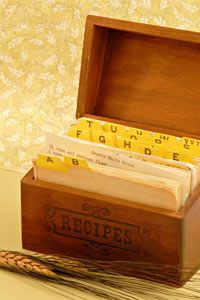It's that time of year again -- time to make the pumpkin cheesecake everyone in the family always asks about. It's the yummiest, creamiest dessert you've ever made and one, after seven Thanksgivings and countless rave reviews, which you almost know by heart.
However, there's one little setback: You don't quite know it by heart. Did the ingredient list call for three eggs, or just three egg yolks? Was it 40 or 50 minutes in the oven? You decide that you need to consult the recipe so you pull your recipe box -- the same one your grandmother used -- down from its shelf and begin rifling through its contents. Hundreds of recipe cards spill onto the counter, but that's only the beginning of the mess. Some recipes aren't even on cards. Instead, they're folded printouts of recipes you found online and ones you cut out of magazines and off chocolate chip packages. You sigh, and start to look through the pile of recipes for the one you need. One thing becomes very clear to you: You desperately need a way to organize your recipes.
Advertisement
If the above occurrence sounds all too familiar, you've come to the right place. In this article, you'll learn about options for organizing your printed recipes, as well as some new ways to organize recipes on your computer or even online [source: Resinger, Baldwin].
Before the era of online recipe filing, there were just good old written and printed recipes. Read on to learn more about different methods of organizing such recipes.
Advertisement

